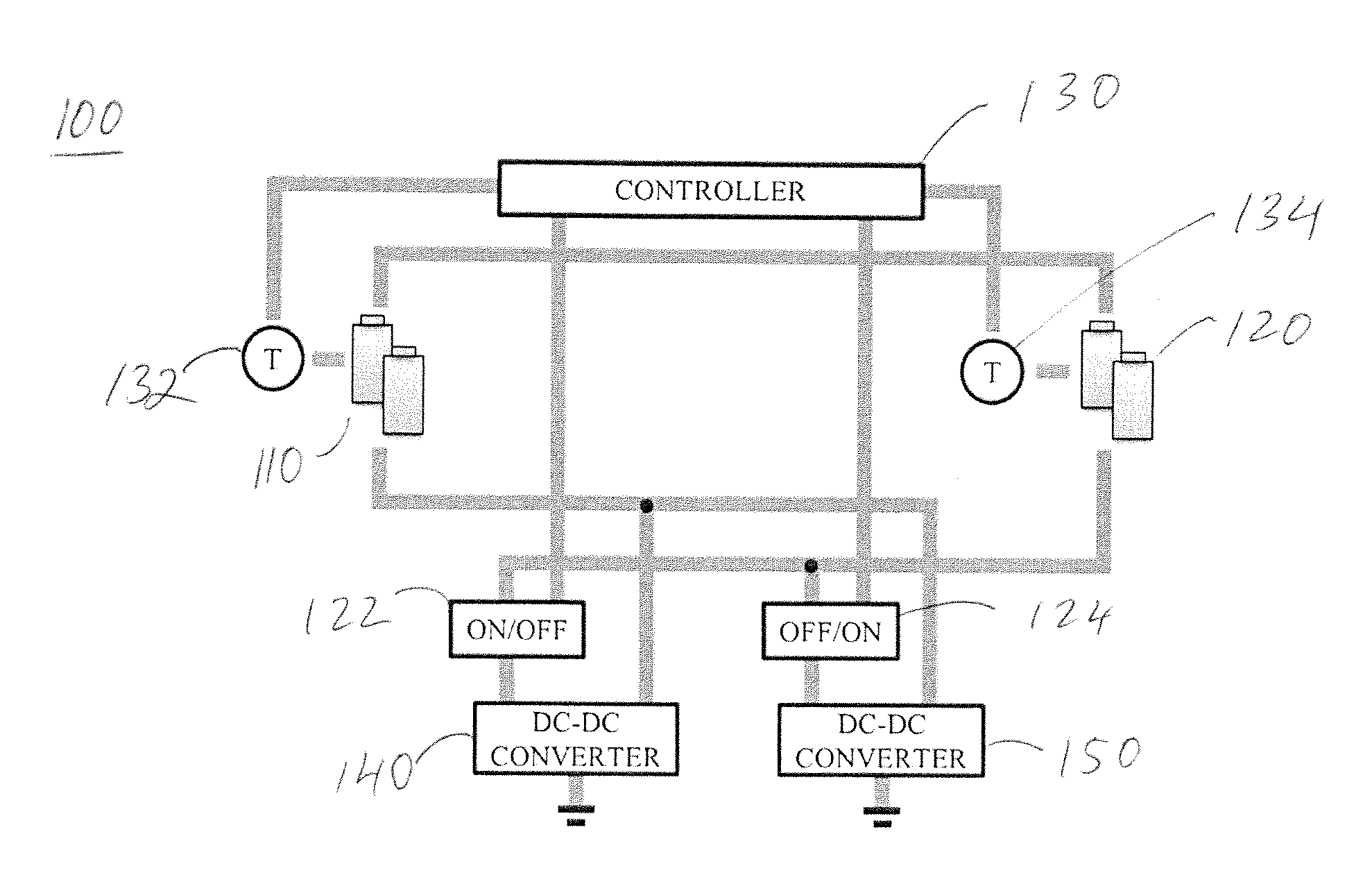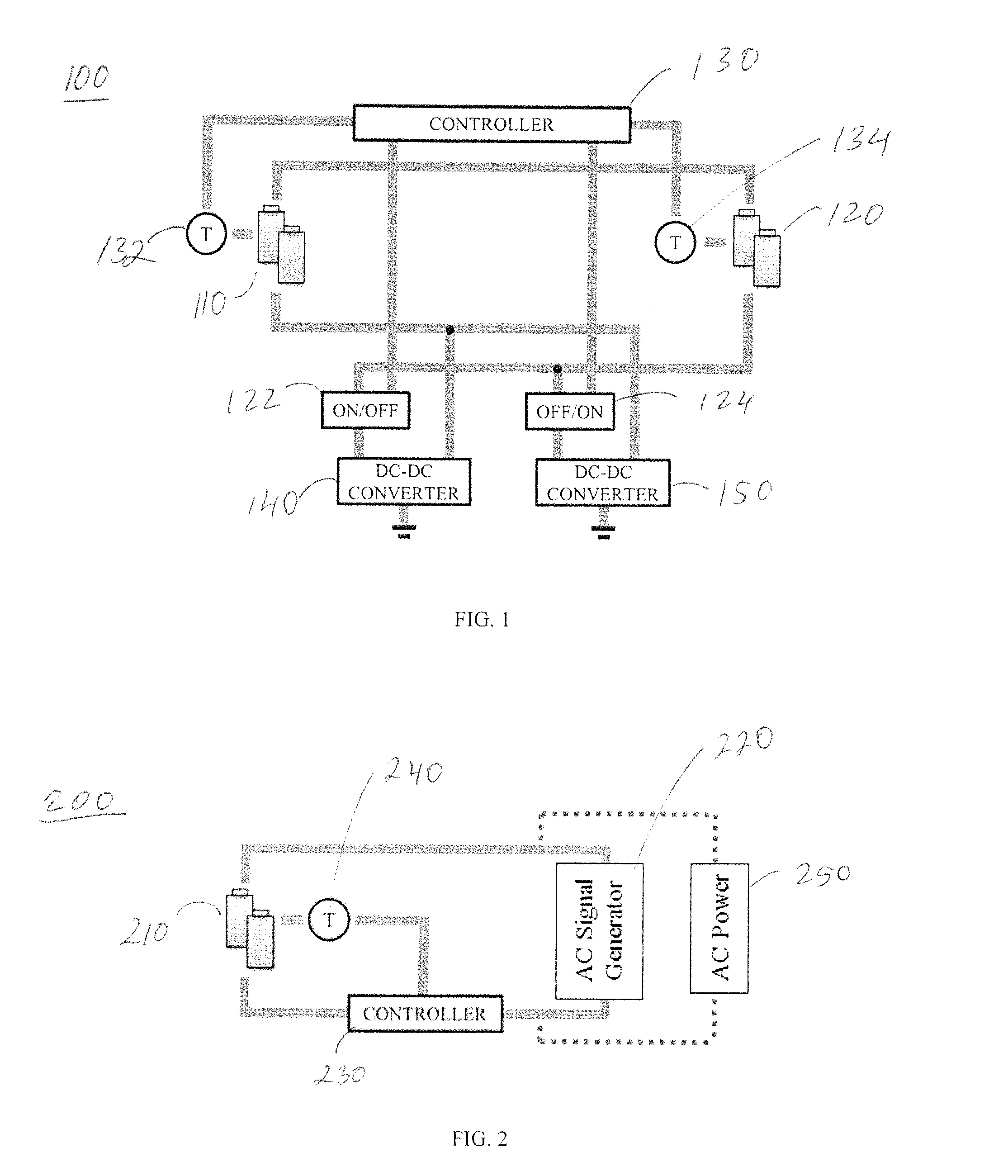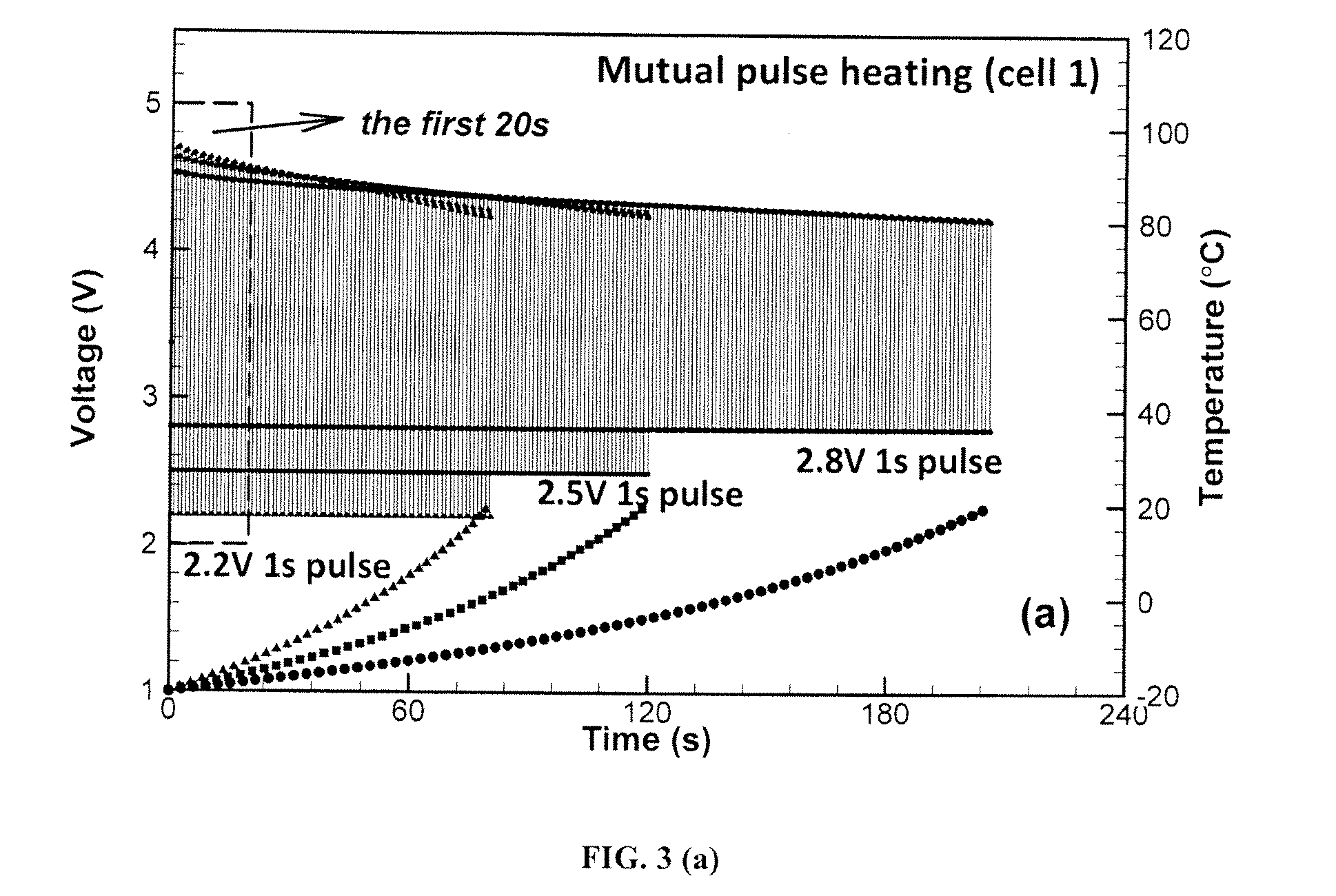Systems for heating a battery and processes thereof
a battery and process technology, applied in battery/fuel cell control arrangement, secondary cell servicing/maintenance, electrochemical generators, etc., can solve the problems of limited market penetration of evs, further adverse effects on the and greatly reduced driving range of evs. , to achieve the effect of extending the driving range of the vehicle and reducing the energy consumption of the battery
- Summary
- Abstract
- Description
- Claims
- Application Information
AI Technical Summary
Benefits of technology
Problems solved by technology
Method used
Image
Examples
examples
[0036]The following examples are intended to further illustrate certain preferred embodiments of the invention and are not limiting in nature. Those skilled in the art will recognize, or be able to ascertain, using no more than routine experimentation, numerous equivalents to the specific substances and procedures described herein.
[0037]In the following example, a simulation is carried out for the mutual pulse heating cycle between two cells. For this simulation, two cells are connected using a dc-dc converter, as depicted in FIG. 1. The two cells start with the same initial conditions. The discharging cell is under a constant voltage mode. The voltage and temperature evolutions of cell 1 during the entire heating process are shown in FIG. 3(a). Discharge voltage levels of 2.2V, 2.5V and 2.8V are attempted independently. The lower levels of discharge voltage exhibit shorter heating time because of more heat generated internally. The pulse intervals are set to 1s. The voltage evoluti...
PUM
 Login to View More
Login to View More Abstract
Description
Claims
Application Information
 Login to View More
Login to View More - R&D
- Intellectual Property
- Life Sciences
- Materials
- Tech Scout
- Unparalleled Data Quality
- Higher Quality Content
- 60% Fewer Hallucinations
Browse by: Latest US Patents, China's latest patents, Technical Efficacy Thesaurus, Application Domain, Technology Topic, Popular Technical Reports.
© 2025 PatSnap. All rights reserved.Legal|Privacy policy|Modern Slavery Act Transparency Statement|Sitemap|About US| Contact US: help@patsnap.com



